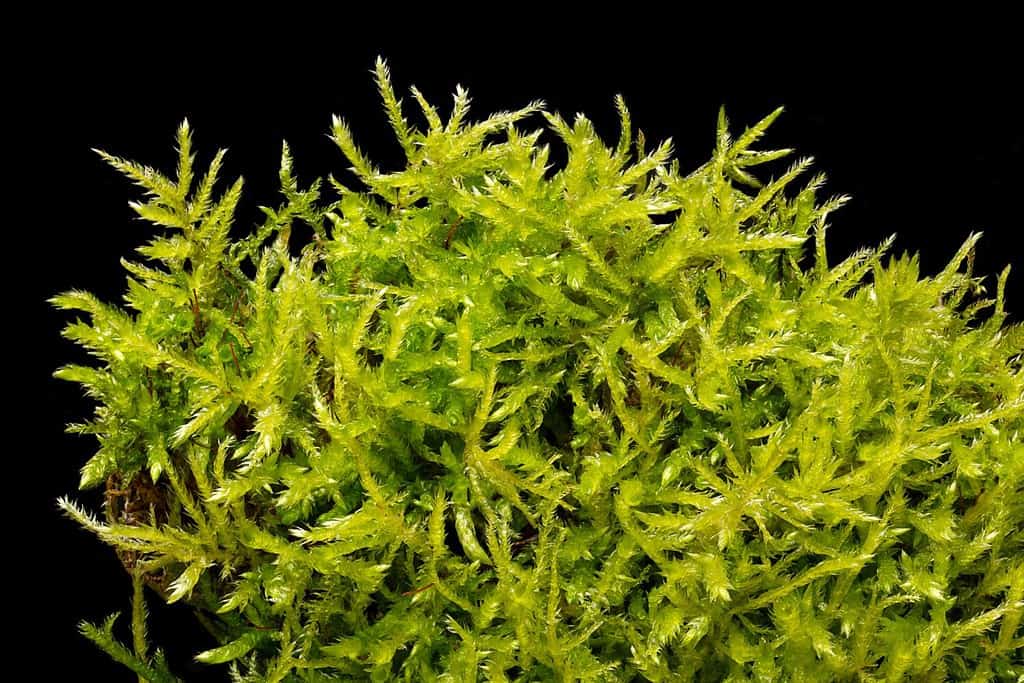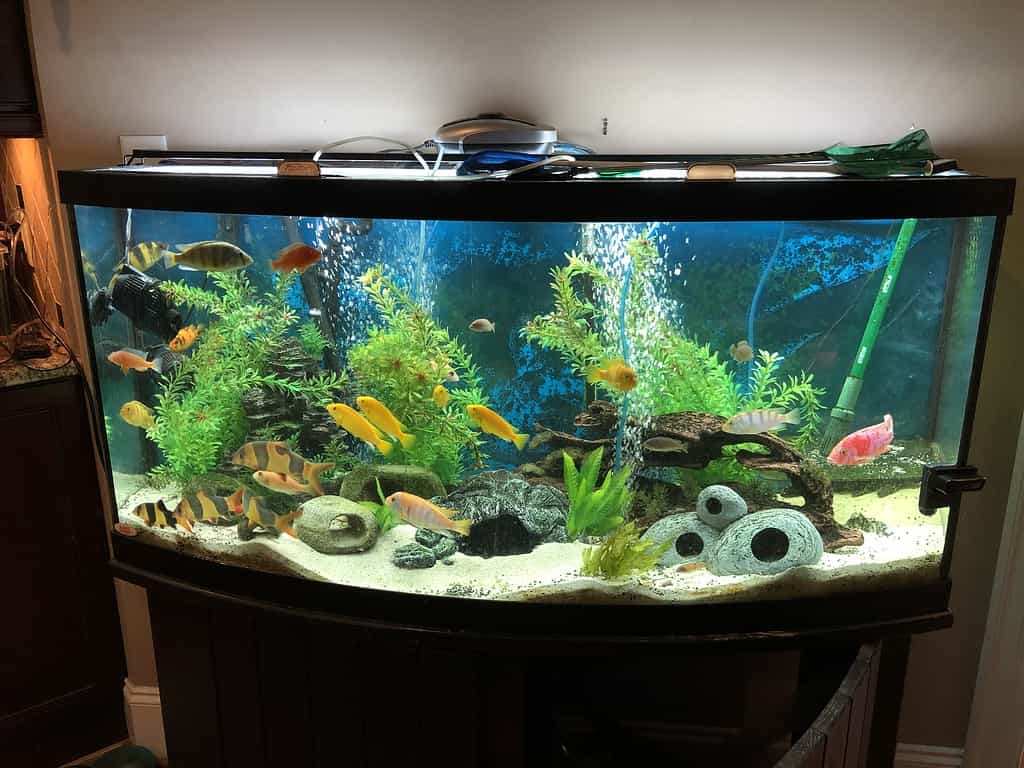Though the process of changing an aquarium’s pH can be daunting, what’s even scarier is the idea that your gilled companions are living in discomfort. Whether you’re a seasoned fish owner and need a refresher, or you’re a first-time tank user and want to familiarize yourself with the concept of pH balancing an aquarium, this article will have all you need to get your fishy friends the environment they need in no time.
We’ll be going over all of the essential know-how, from what makes a balanced pH important to the impacts that an unbalanced pH can have in the long run. But that’s not all! We’re also including six guaranteed methods to adjust that pH level, with three dedicated solutions for both raising and lowering. So now, without further adieu, let’s dive in!
The Importance of a Balanced PH in Your Aquarium

Though it depends entirely on the kind of fish that reside within your tank, the general rule of thumb is for your aquarium to keep a pH balance between 6.5 and 8.0.
©ISEN STOCKER/Shutterstock.com
If you’re new to fish ownership, the idea of changing the pH of an aquarium can be challenging to wrap your head around. For instance, you might wonder what the impacts of having a non-balanced pH can be. You should do as much research as possible about the particular fish in your aquarium, as fish from different water environments will have different needs. Since most people keep all of their fish in one tank, regardless of their origins, there is a general rule. It is advisable that the pH of your tank falls between 6.5 to 8.0 and should be adjusted according to the kinds of fish inhabiting that tank.
It is imperative, above all else, that you take your tank’s pH seriously. Having unbalanced levels can have severe adverse effects, from the injury of your fish to their potential death. Though an unbalanced pH can be a major issue, these aforementioned impacts are highly preventable. So long as you take the time to understand and adjust for the correct pH, this problem is a quick fix in many instances. That said, here are some of the issues your fish can experience if their aquarium’s pH is off-kilter.
The Effects of an Unbalanced Aquarium PH
- Fish Health Problems:
- Stress, which makes fish more susceptible to diseases
- Respiratory distress due to altered oxygen and carbon dioxide exchange
- Damage to the gills, skin, and eyes
- Metabolic disturbances
- Impact on Beneficial Bacteria:
- Disruption of the nitrogen cycle due to inhibition of beneficial bacteria that help in breaking down waste
- The potential buildup of toxic substances like ammonia and nitrites
- Water Chemistry Changes:
- Altered solubility of minerals, affecting the availability of essential elements
- Changes in the toxicity of various compounds. For example, a lower pH can increase the toxicity of metals like copper
- Equipment and Decoration Degradation:
- Corrosion or deterioration of certain types of aquarium decorations and equipment, especially if the pH swings are frequent or extreme
- Algae Blooms:
- Certain pH levels can encourage unwanted algae growth, leading to green or murky water and potential depletion of oxygen levels
Raising The PH In Your Aquarium

Tetras are one of the few species of aquarium fish that enjoy a severely low (acidic) pH level.
©nektofadeev/Shutterstock.com
Certain kinds of aquarium fish, such as tetras, appreciate a low pH, which means a pH below the recommended 6.5. However, these fish breeds are few and far between, and most of the time, fish cannot tolerate a pH that low. So, if you test your tank’s pH and it’s looking a bit too low for comfort, it’s essential to know how to increase it. With routine maintenance, Changing the pH of an aquarium is, luckily a task that you won’t frequently have to do.
Signs Your Aquarium’s PH Needs to be Raised
The first telltale sign of a substantially low pH is a brown tint to the aquarium’s water. This means that something within your tank is giving off tannins, which are organic compounds produced by plants and are naturally acidic. When too many tannins are released into the tank, it can cause a dramatic dip in pH.
Another indicator that your pH is low is that your aquarium has poor aeration. You see, sometimes the CO2 that your fish naturally give off during respiration can build up in the tank’s water column. When this happens, and your tank has no way of filtering, the pH will gradually lower over time.
Method One: Tried and True Water Changes
Sometimes, the most simple answer is the correct one. When it comes to changing the pH of an aquarium, this simple answer is routine water changes. If you test the pH of your home’s tap water and find that it falls in the acceptable aquarium range, then you should be able to begin the easy and effective process, which is 50% water changes every other day. The best part of this method is that it gets easier with time. Once your tank has leveled out its pH, you can reduce these water changes to once per week.
Method Two: Add Some Baking Soda
If your tap water doesn’t seem to be cutting it, or you need a more rapid and more concentrated pH increase, you can use the simple household ingredient of baking soda. You can make a big difference by using just a small teaspoon per 19 liters of water. A good rule of thumb for this method is to start small and closely monitor how the pH adjusts. Sometimes the fix is simple, and you’ll only need to add the baking soda once!
Method Three: Use Crushed Coral

Adding crushed coral to your aquarium is an excellent alternative to chemicals when lowering or raising your pH.
©Black.Horse/Shutterstock.com
Our final method for increasing the pH of your aquarium is by using crushed coral. Because coral is made from calcium carbonate, these two natural minerals will leech themselves into your water column. This is an excellent fix because it’s an alternative to the more chemical-ridden products advertised in some pet stores.
Lowering The PH In Your Aquarium

Don’t panic when you notice the pH in your aquarium is off. Instead, think critically about the causes and solutions.
©Ladanifer/Shutterstock.com
Checking the pH of your aquarium and noticing that it’s particularly acidic can be pretty troubling, especially if your fish have begun behaving unusually. It’s encouraged that you don’t panic and especially don’t invest in gimmicky and chemical-based products. There are several natural solutions to a high aquarium pH, which can be easily contained and solved with a little effort.
Signs Your Aquarium’s PH Needs to be Lowered
There are specific signs you’ll notice when changing the pH of an aquarium becomes necessary. When it comes to a high pH, these symptoms are often noticeable. Firstly, your fish are going to begin behaving quite unusually. The illness in fish that a high water pH causes is called alkalosis. Fish suffering from this illness will behave erratically, swimming at incredibly fast paces and even rubbing against miscellaneous items within the aquarium. They’ll begin breathing in a labored manner, and they might even start secreting mucus. When you notice these symptoms, you must act quickly.
Another less severe symptom of a high aquarium pH is an increased or rapid development of algae and moss within the tank. This increased growth is encouraged by the high levels of alkaline, and over time, the presence of this algae will become toxic for your fish.
1. Add Some Peat Moss

Try peat muss as a natural filter for your aquarium and to improve the pH.
©Peter Hermes Furian/Shutterstock.com
Peat moss is a trusted way to filter out any gunk that’s floating about in your fish tank. It releases tannic and gallic acids, which work to attack any bicarbonates in the aquarium’s water. This helps to reduce the pH of the tank, as well as the water’s hardness. There’s no way to precisely measure the amount of moss necessary for maintaining a balanced pH, so it is advisable to start small and work your way into slowly increasing the amount used.
There is one slight catch to the use of peat moss, but it is merely an aesthetic one. The initial introduction of this moss will create a bit of an odd discoloration to the tank’s water. Keep in mind that this is natural and not cause for alarm. If it profoundly bothers you, you can always pre-treat water in a separate container until it reaches the desired pH level and then slowly introduce that water into your tank.
2. Try Reverse Osmosis
This method of pH adjustment might be expensive, but it is incredibly effective. The precision that this method allows is unmatched, as reverse osmosis utilizes something called a semipermeable membrane to filter out the impurities that lie within your aquarium. It might require a hefty upfront cost and routine maintenance, but once it is installed and running, your days of worrying about the tank’s pH will surely be behind you.
3. Throw in Some Catappa Leaves

For the effects of peat moss without discoloration, utilize the addition of Catappa leaves into your aquarium.
©PCbang/Shutterstock.com
Catappa leaves, which are also referred to as Indian Almond leaves, are a pH-balancing option that is both affordable and effective. Like peat moss, these leaves release tannin as they start to decay in the water. Unlike the moss, though, these leaves won’t give you any troublesome discoloration. They do float and scatter around, but if that bothers you, you can tie them together and tuck them away into a hidden corner of the tank. Out of sight, out of mind!
The “Perfect PH” Doesn’t Exist

You shouldn’t worry obsessively about the pH of your tank; instead, just watch your fish’s health.
©LizWinfreyV, CC BY-SA 4.0, via Wikimedia Commons – Original / License
We have already established that for your fish to thrive in their glass home, you need to ensure they have a healthy pH balance. Although, this doesn’t mean that you should be losing sleep at night if your tank is experiencing a pH that is just slightly off the mark. Much to the dismay of perfectionist fish owners, there is no way of achieving a perfect pH. In fact, too much aggressive pH maintenance can actually end up doing far more harm than good for your aquarium and the fish residing in it.
Constantly changing and shifting pH can have adverse effects, sometimes even more so than a balance that is occasionally off. That doesn’t mean you shouldn’t track the pH and intervene when necessary, but there’s no need to poke the metaphorical bear and go back and forth with your efforts.
In the end, keeping the pH secure is better than constantly changing the pH of an aquarium. What matters the most is consistency and monitoring the health of your fish. If they’re happy and they seem perfectly healthy, a pH off by a point or two won’t have any adverse impacts. Just concentrate on routine maintenance and giving your fish friends the love and attention they need!
The photo featured at the top of this post is © LizWinfreyV, CC BY-SA 4.0, via Wikimedia Commons – License / Original
Thank you for reading! Have some feedback for us? Contact the AZ Animals editorial team.







